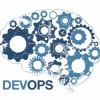 |
Test Coverage in the Age of Continuous Delivery Test coverage is a strategy to help us spend scarce testing time on the right priorities. When things were tested last, how much automation coverage we have, how often the customers use the feature, and how critical the feature is to application are all factors to consider. Here are some ideas for keeping quality high when you're transitioning to continuous delivery. |
|
 |
Overcome Test Automation Plateaus with Service Virtualization With complex enterprise test automation systems, at least some of the many required dependencies are commonly incomplete, unavailable, or operating incorrectly at the time of test execution. The result is timeouts, incomplete tests, false positives, and inaccurate results. Service virtualization can help you overcome this plateau and increase test automation rates. |
|
 |
Agile Managers: Trust Your Team and Encourage Innovation In order to fully embrace agile and create an environment where individuals want to work together as a team, managers have to move from a role of dictation to one of direction and mentorship. Instead of making all the decisions, managers need to trust their team members and empower them to solve problems on their own, innovate, and fail—or succeed. |
|
 |
DevOps: Collaboration with a Purpose Development, operations, and QA have long recognized the importance of coexistence, but they've still had weak or unbalanced relationships. DevOps emphasizes collaboration, rejecting the "us versus them" mentality. Every department needs information, feedback, and support from every other department, helping everyone see how they enable each other. |
|
 |
Leverage Containers to Create Simulated Test Environments on Demand Adopting service virtualization can allow organizations to achieve more effective software development and testing by removing traditional test environment bottlenecks. Integrating service virtualization within the continuous delivery pipeline using containerization helps teams reach the level of flexibility required by today's competitive markets. |
|
 |
Teach DevOps Software Development with a Game The core idea of DevOps is the various roles working together to create a stable software system. People can hear that, or read about it, or even observe it, but often, the best way for a team new to DevOps to understand it is to just do it. When you're starting out, that can lead to failures on a real system, so a simulation is a good idea. Try playing a game to introduce your team to DevOps. |
|
 |
The Value of Making Your Data Sources Reusable across Test Automation Tools Many automation tools have a mechanism for storing data used in their test scripts. Typically, the specifics of this mechanism is different across tools, making it difficult to use this data outside the tool itself. Using an external, reusable data source allows organizations to avoid the cost of migrating or duplicating existing data, thereby future-proofing their frameworks. |
|
 |
Testing in Production: A Double-Edged Sword Testing in production gives more realistic opportunities to test, increases application transparency between the core product team and users, and supports the idea of continuous development through continuous testing. It's a good technique to embrace in your testing process—but it should not be entered into unprepared. Learn the advantages and pitfalls here. |
|
 |
Testing the Unexpected: A Shift Right in DevOps Testing When it comes to testing in DevOps, more than simple regression checking can be automated. By shifting right in the lifecycle and testing in production, you can analyze the undefined, unknown, and unexpected by relying on real traffic and unpredictable test input. With shorter implementation and release cycles, testing and production come closer together. |
|
 |
You Can’t Buy DevOps There are organizations that want to “buy DevOps,” like it is a plugin to add to the development process. They often create a new role, team, department, or infrastructure. But you can't buy DevOps, and it's not a designated team, either. It is the idea of people working together. Here are some approaches to get you there. |
Pages
Upcoming Events
| Sep 22 |
STARWEST Software Testing Conference in Anaheim & Online |
| Oct 13 |
Agile + DevOps USA The Conference for Agile and DevOps Professionals |
| Apr 27 |
STAREAST Software Testing Conference in Orlando & Online |










